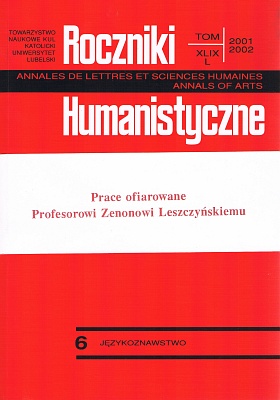The Reductions of Consonant Groups in the Dialects of the Lublin Eastern Region
Abstract
The paper discusses consonant groups which occur in Polish dialects of the Lublin eastern region. Taking dialect and not literary language as the point of departure (thus it is assumed that there exist the group p/č in the form of opčyśćić aside to očyścić in the literary language, for the prefix ob- with its literary counterpart o- is proper to the dialects under study).
The description of the reductions of the consonant groups has been presented with regard to three positions in a word: initial sound, middle sound, and final sound. As regards particular positions, one may consider together consonants groups both inside the morpheme and on its border.
Our analysis of dialects leads to a conclusion that the range and scope of the reductions of consonant groups are varied. The simplifications of consonant groups in the Polish dialects of the Lublin eastern region are present in the initial sound, middle sound, and final sound. In the first two positions they included two-, three-, and four-morpheme groups, whereas in the final position only in two- and three-phoneme groups.
Apart from the definite consonant groups occurring all over the territory under consideration, e.g. pšyńus, there are groups which reach southward, e.g. šeś, v'eś “wieźć”, and north-westward, e.g. pošetem “poszedłem” (I went). It is the specific character of the dialects under study that we find in them simplifications. The latter are due to the substrate of the Ukrainian dialects, e.g. ładyška (: hładyška).
Copyright (c) 2002 Roczniki Humanistyczne

This work is licensed under a Creative Commons Attribution-NonCommercial-NoDerivatives 4.0 International License.





